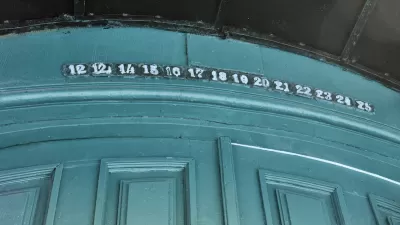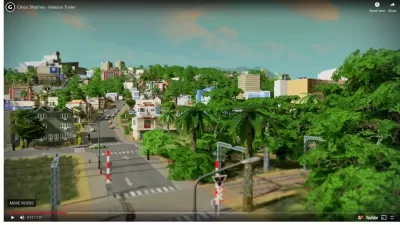Caeser Augustus famously boasted "I found Rome a city of bricks and left it a city of marble." An architectural historian and urban designer at UCLA now has the model to prove the veracity of the claim.
Stefanie Pietkiewicz provides the background on an ambitious project by Diane Favro, a professor of architecture and urban design at the University of California, Los Angeles.
"Favro decided to uncover the truth behind Augustus’ famous declaration by using advanced modeling software to reconstruct the city of seven hills in its entirety and observing how it changed during the period when he was in power."
"Many scholars have looked at Augustus’ claim from a political standpoint, as a metaphor for him transforming a republic into an empire," Favro explains in the article. "I wanted to see if Rome literally transformed under his rule."
The method behind Favro's work is worth noting for its connection to urban design practices. According to Pietkiewicz, "Favro recreated Augustan Rome algorithmically using a technique known as procedural modeling. Scholars have tended to study the transformation of individual buildings in Rome instead of focusing on the transformation of the city as a whole because they lack the data needed to do so. While procedural modeling 'has not been widely used as a tool to reconstruct ancient cities,' Favro said, it has been used by urban designers to create contemporary cities."
The final model, and the answer to the question at stake, is available for viewing on an ArcGIS City Engine Web Viewer. For more on Favro's work, also check out the Digital Karnak project, a website that details the political, religious and architectural history of one of the world's most expansive temple complexes in Egypt.
FULL STORY: From brick to marble: Did Augustus Caesar really transform Rome?

Maui's Vacation Rental Debate Turns Ugly
Verbal attacks, misinformation campaigns and fistfights plague a high-stakes debate to convert thousands of vacation rentals into long-term housing.

Planetizen Federal Action Tracker
A weekly monitor of how Trump’s orders and actions are impacting planners and planning in America.

San Francisco Suspends Traffic Calming Amidst Record Deaths
Citing “a challenging fiscal landscape,” the city will cease the program on the heels of 42 traffic deaths, including 24 pedestrians.

Defunct Pittsburgh Power Plant to Become Residential Tower
A decommissioned steam heat plant will be redeveloped into almost 100 affordable housing units.

Trump Prompts Restructuring of Transportation Research Board in “Unprecedented Overreach”
The TRB has eliminated more than half of its committees including those focused on climate, equity, and cities.

Amtrak Rolls Out New Orleans to Alabama “Mardi Gras” Train
The new service will operate morning and evening departures between Mobile and New Orleans.
Urban Design for Planners 1: Software Tools
This six-course series explores essential urban design concepts using open source software and equips planners with the tools they need to participate fully in the urban design process.
Planning for Universal Design
Learn the tools for implementing Universal Design in planning regulations.
Heyer Gruel & Associates PA
JM Goldson LLC
Custer County Colorado
City of Camden Redevelopment Agency
City of Astoria
Transportation Research & Education Center (TREC) at Portland State University
Jefferson Parish Government
Camden Redevelopment Agency
City of Claremont





























